 Starr Bright Will Be With You Soon
Starr Bright Will Be With You Soon My Heart Laid Bare
My Heart Laid Bare A Fair Maiden
A Fair Maiden The Doll-Master and Other Tales of Terror
The Doll-Master and Other Tales of Terror Wild Nights!: Stories About the Last Days of Poe, Dickinson, Twain, James, and Hemingway
Wild Nights!: Stories About the Last Days of Poe, Dickinson, Twain, James, and Hemingway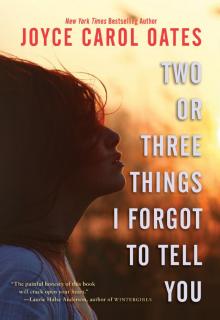 Two or Three Things I Forgot to Tell You
Two or Three Things I Forgot to Tell You Because It Is Bitter, and Because It Is My Heart
Because It Is Bitter, and Because It Is My Heart Missing Mom: A Novel
Missing Mom: A Novel The Gravedigger's Daughter: A Novel
The Gravedigger's Daughter: A Novel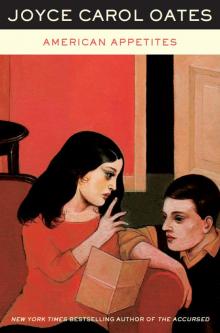 American Appetites
American Appetites Black Dahlia White Rose: Stories
Black Dahlia White Rose: Stories Zombie
Zombie Soul at the White Heat: Inspiration, Obsession, and the Writing Life
Soul at the White Heat: Inspiration, Obsession, and the Writing Life Son of the Morning
Son of the Morning Patricide
Patricide Snake Eyes
Snake Eyes Wonderland
Wonderland In Rough Country: Essays and Reviews
In Rough Country: Essays and Reviews Little Bird of Heaven
Little Bird of Heaven The Haunting
The Haunting The Accursed
The Accursed My Sister, My Love: The Intimate Story of Skyler Rampike
My Sister, My Love: The Intimate Story of Skyler Rampike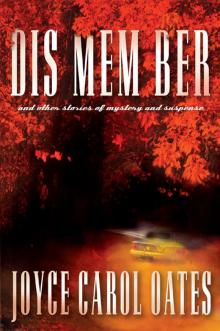 Dis Mem Ber and Other Stories of Mystery and Suspense
Dis Mem Ber and Other Stories of Mystery and Suspense You Can't Catch Me
You Can't Catch Me Daddy Love: A Novel
Daddy Love: A Novel Broke Heart Blues
Broke Heart Blues I'll Take You There
I'll Take You There Mystery, Inc.
Mystery, Inc. We Were The Mulvaneys
We Were The Mulvaneys The Lost Landscape: A Writer's Coming of Age
The Lost Landscape: A Writer's Coming of Age Evil Eye: Four Novellas of Love Gone Wrong
Evil Eye: Four Novellas of Love Gone Wrong Nemesis
Nemesis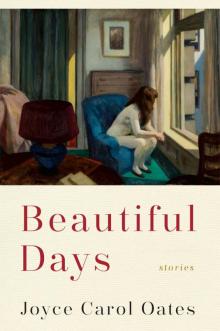 Beautiful Days: Stories
Beautiful Days: Stories On Boxing
On Boxing Mudwoman
Mudwoman Hazards of Time Travel
Hazards of Time Travel Night-Gaunts and Other Tales of Suspense
Night-Gaunts and Other Tales of Suspense Mysteries of Winterthurn
Mysteries of Winterthurn New Jersey Noir
New Jersey Noir Sourland
Sourland Blonde
Blonde The Corn Maiden: And Other Nightmares
The Corn Maiden: And Other Nightmares The Oxford Book of American Short Stories
The Oxford Book of American Short Stories Rape: A Love Story
Rape: A Love Story Lovely, Dark, Deep: Stories
Lovely, Dark, Deep: Stories After the Wreck, I Picked Myself Up, Spread My Wings, and Flew Away
After the Wreck, I Picked Myself Up, Spread My Wings, and Flew Away Freaky Green Eyes
Freaky Green Eyes Night, Neon
Night, Neon I Am No One You Know: And Other Stories
I Am No One You Know: And Other Stories Black Water
Black Water Expensive People
Expensive People The Falls
The Falls Soul/Mate
Soul/Mate The Sacrifice
The Sacrifice The (Other) You
The (Other) You What I Lived For
What I Lived For Prison Noir
Prison Noir High Crime Area: Tales of Darkness and Dread
High Crime Area: Tales of Darkness and Dread Faithless: Tales of Transgression
Faithless: Tales of Transgression Give Me Your Heart: Tales of Mystery and Suspense
Give Me Your Heart: Tales of Mystery and Suspense The Rescuer
The Rescuer A Book of American Martyrs
A Book of American Martyrs American Melancholy
American Melancholy Double Delight
Double Delight Big Mouth Ugly Girl
Big Mouth Ugly Girl Bellefleur
Bellefleur Solstice
Solstice Big Mouth & Ugly Girl
Big Mouth & Ugly Girl Evil Eye
Evil Eye Rape
Rape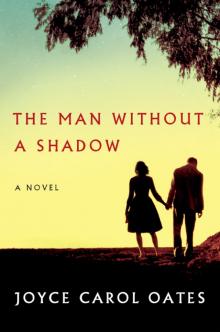 The Man Without a Shadow
The Man Without a Shadow Missing Mom
Missing Mom My Sister, My Love
My Sister, My Love The Gravedigger's Daughter
The Gravedigger's Daughter Beautiful Days
Beautiful Days The Lost Landscape
The Lost Landscape Daddy Love
Daddy Love Dreams from the Witch House: Female Voices of Lovecraftian Horror
Dreams from the Witch House: Female Voices of Lovecraftian Horror The Tattooed Girl
The Tattooed Girl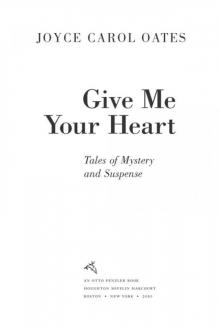 Give Me Your Heart
Give Me Your Heart In Rough Country
In Rough Country The Journal of Joyce Carol Oates
The Journal of Joyce Carol Oates Black Dahlia & White Rose: Stories
Black Dahlia & White Rose: Stories High Crime Area
High Crime Area Lovely, Dark, Deep
Lovely, Dark, Deep A Widow's Story
A Widow's Story Soul at the White Heat
Soul at the White Heat Wild Nights!
Wild Nights! Starr Bright Will Be With You Soon
Starr Bright Will Be With You Soon My Heart Laid Bare
My Heart Laid Bare A Fair Maiden
A Fair Maiden The Doll-Master and Other Tales of Terror
The Doll-Master and Other Tales of Terror Wild Nights!: Stories About the Last Days of Poe, Dickinson, Twain, James, and Hemingway
Wild Nights!: Stories About the Last Days of Poe, Dickinson, Twain, James, and Hemingway Two or Three Things I Forgot to Tell You
Two or Three Things I Forgot to Tell You Because It Is Bitter, and Because It Is My Heart
Because It Is Bitter, and Because It Is My Heart Missing Mom: A Novel
Missing Mom: A Novel The Gravedigger's Daughter: A Novel
The Gravedigger's Daughter: A Novel American Appetites
American Appetites Black Dahlia White Rose: Stories
Black Dahlia White Rose: Stories Zombie
Zombie Soul at the White Heat: Inspiration, Obsession, and the Writing Life
Soul at the White Heat: Inspiration, Obsession, and the Writing Life Son of the Morning
Son of the Morning Patricide
Patricide Snake Eyes
Snake Eyes Wonderland
Wonderland In Rough Country: Essays and Reviews
In Rough Country: Essays and Reviews Little Bird of Heaven
Little Bird of Heaven The Haunting
The Haunting The Accursed
The Accursed My Sister, My Love: The Intimate Story of Skyler Rampike
My Sister, My Love: The Intimate Story of Skyler Rampike Dis Mem Ber and Other Stories of Mystery and Suspense
Dis Mem Ber and Other Stories of Mystery and Suspense You Can't Catch Me
You Can't Catch Me Daddy Love: A Novel
Daddy Love: A Novel Broke Heart Blues
Broke Heart Blues I'll Take You There
I'll Take You There Mystery, Inc.
Mystery, Inc. We Were The Mulvaneys
We Were The Mulvaneys The Lost Landscape: A Writer's Coming of Age
The Lost Landscape: A Writer's Coming of Age Evil Eye: Four Novellas of Love Gone Wrong
Evil Eye: Four Novellas of Love Gone Wrong Nemesis
Nemesis Beautiful Days: Stories
Beautiful Days: Stories On Boxing
On Boxing Mudwoman
Mudwoman Hazards of Time Travel
Hazards of Time Travel Night-Gaunts and Other Tales of Suspense
Night-Gaunts and Other Tales of Suspense Mysteries of Winterthurn
Mysteries of Winterthurn New Jersey Noir
New Jersey Noir Sourland
Sourland Blonde
Blonde The Corn Maiden: And Other Nightmares
The Corn Maiden: And Other Nightmares The Oxford Book of American Short Stories
The Oxford Book of American Short Stories Rape: A Love Story
Rape: A Love Story Lovely, Dark, Deep: Stories
Lovely, Dark, Deep: Stories After the Wreck, I Picked Myself Up, Spread My Wings, and Flew Away
After the Wreck, I Picked Myself Up, Spread My Wings, and Flew Away Freaky Green Eyes
Freaky Green Eyes Night, Neon
Night, Neon I Am No One You Know: And Other Stories
I Am No One You Know: And Other Stories Black Water
Black Water Expensive People
Expensive People The Falls
The Falls Soul/Mate
Soul/Mate The Sacrifice
The Sacrifice The (Other) You
The (Other) You What I Lived For
What I Lived For Prison Noir
Prison Noir High Crime Area: Tales of Darkness and Dread
High Crime Area: Tales of Darkness and Dread Faithless: Tales of Transgression
Faithless: Tales of Transgression Give Me Your Heart: Tales of Mystery and Suspense
Give Me Your Heart: Tales of Mystery and Suspense The Rescuer
The Rescuer A Book of American Martyrs
A Book of American Martyrs American Melancholy
American Melancholy Double Delight
Double Delight Big Mouth Ugly Girl
Big Mouth Ugly Girl Bellefleur
Bellefleur Solstice
Solstice Big Mouth & Ugly Girl
Big Mouth & Ugly Girl Evil Eye
Evil Eye Rape
Rape The Man Without a Shadow
The Man Without a Shadow Missing Mom
Missing Mom My Sister, My Love
My Sister, My Love The Gravedigger's Daughter
The Gravedigger's Daughter Beautiful Days
Beautiful Days The Lost Landscape
The Lost Landscape Daddy Love
Daddy Love Dreams from the Witch House: Female Voices of Lovecraftian Horror
Dreams from the Witch House: Female Voices of Lovecraftian Horror The Tattooed Girl
The Tattooed Girl Give Me Your Heart
Give Me Your Heart In Rough Country
In Rough Country The Journal of Joyce Carol Oates
The Journal of Joyce Carol Oates Black Dahlia & White Rose: Stories
Black Dahlia & White Rose: Stories High Crime Area
High Crime Area Lovely, Dark, Deep
Lovely, Dark, Deep A Widow's Story
A Widow's Story Soul at the White Heat
Soul at the White Heat Wild Nights!
Wild Nights!